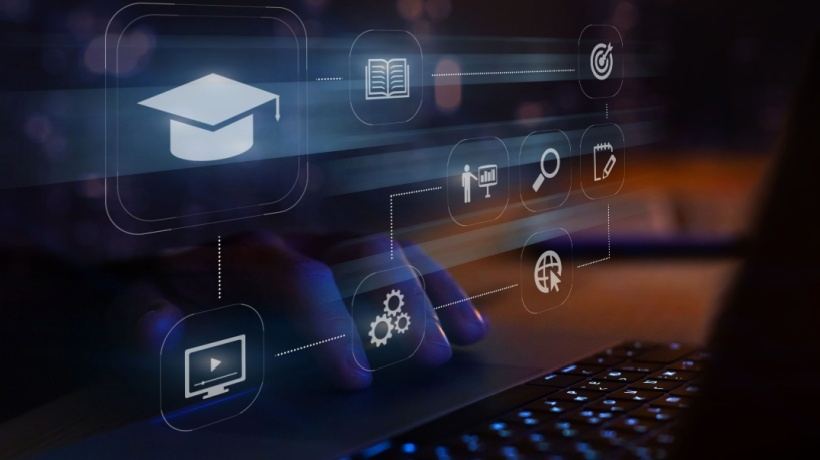Chinese Ed Tech Industry: Is It Disrupting The HR Domain?
In the HR space, tech advancements have been promising to disrupt the field since cloud-based systems took off in the 1990s. We’ve seen enough disruption in fields outside HR like hospitality, transportation, and finance, to know that major transformation is possible. Because HR is used by all industry verticals, the implications for change are vast and dramatic. Some innovative technologies are currently being used in the HR domain. Typically, in the average organization, we see some innovative developments around applicant CV screening, online learning, and the use of cloud HRIS, but what is next for HR, and should we brace for imminent and radical disruption?
Background
A review of the Education Technology field in China suggests that radical disruption in the way we practice HR and talent management is probable, because of the practical advantages Chinese Ed Tech has demonstrated in its capabilities to provide increased process efficiency and better business outcomes. As we have discussed in our previous articles (Kantor & Paul, 2019), VC spend on Chinese Ed Tech startups, the Chinese government’s funding and support along with an intense demand among parents to improve their children’s educational outcomes have been key influencing factors in the growth and development of Chinese Ed Tech (Kantor & Paul, 2019). Because of these supporting factors, and the lack of constraining regulations around the use of personal data, the Chinese have become the world’s leader in the use of AI and Big Data analytics in education and learning management. From the Western perspective, the Chinese practice of personal data collection is fraught with ethical challenges and considerations, but in China, this is not the case; any steps taken to improve society by increasing the quality and preparedness of their workforce is considered justified and worth pursuing. It’s the classic “ends justify the means” philosophy and is no less plausible due to its ethically dubious nature. While trade barriers and regulations could hinder the transfer of Chinese technology and intellectual capital in the near term, we believe that once the innovations are implemented and prove viable and worthwhile, they can be easily adapted to platforms with more ethically rigorous data practices and leveraged by more socially conscious governments and corporations.
Access To Big Data Is The Basis Of Successful AI Implementation
Why is data collection so important for education technology? This is because Artificial Intelligence (AI) is the critical factor to EdTech advancements and in the field of AI, algorithms, the building blocks of “Machine Learning” are freely available to all. However, the data required to “train” algorithms to produce useful outcomes is largely proprietary. Thus, access to numerous data points housed in “Big” Data systems provides a competitive advantage. This advantage is controversially exploited by programs such as China’s social credit system, where a variety of behavioral data is used by AI systems to assign scores to individuals that can restrict them from flying, accessing certain financial services and even the kinds of trains they are allowed to board. While there is certainly a danger, China will use similar tactics in their education services, this does not preclude them from also developing innovations that could target optimal learning programs for individuals based on predictive analytics.
Areas To Watch As Chinese Ed Tech Advances
For these reasons, we’ve paid close attention to China’s Global Education Technology Summit, and the advancements several Chinese firms have made in the education space. Based on their efforts, we’ve identified 3 areas where the systems and practices of HR are likely to transform in the coming years:
1. Enhanced Virtual Learning Environments
A number of Chinese firms have already implemented enhancements to Virtual Learning Environments. Our previous article in this series highlighted: Empower Education Online, TAL Education Group, and YouDao, as firms who are steadily advancing a variety of features for interpreting and sensing student and teacher classroom behaviors. Facial recognition, real-time language translation, non-verbal behaviors, and even the emotional states of distant learners can now be identified by AI. Additionally, they are pioneering the use of VR-AR environments that enable the manipulation of 3D virtual objects and, perhaps most importantly, the ability to predict the type of learning content that will be most beneficial to an individual.
In a corporate learning environment, these features would enable the ongoing collection of unprecedented amounts of data relating to employee demographics, emotional engagement, and potential career interests. AI could, then, be used to predict the most beneficial learning content to “serve up” to learners. By feeding learning outcomes into the algorithms, the quality of learning content would gradually and automatically improve over time. Additionally, Millennials and others would be better able to explore their career options and aptitudes through AI recommendations without requiring focused attention from managers or HR. Finally, the new modes of virtual learning interactions (for example, VR 3D object manipulation, speech, and gesture recognition) will expand interest in many virtual courses and increase the learnability and speed to the understanding of more difficult content.
As these applications become more prevalent, HR professionals will be responsible for tweaking their learning eco-systems rather than designing wholly new programs. They will be called upon to enhance “content areas” or “learning tracks” containing a variety of programs. Then, the AI will be trusted to “learn” which courses are most effective within the business context and learner base. Learning professionals, therefore, will need to be skilled at interpreting the vast troves of data collected by the system into intelligible and actionable insights.
2. Predicting Performance And Potential
Algorithms utilized by companies like TAL, YouDao, and others can now better predict at which courses learners will excel. Talent Management Systems will also improve their predicting at in which roles specific individuals will succeed. These advances will result not only in individuals benefiting from exploring more personally fulfilling career paths but also in HR gaining a valuable new talent management tool.
Consider the standard 9-Box performance/potential matrix in which talent is categorized in one of 9 boxes based on the collective, mostly subjective, opinions of senior leaders. This, in turn, influences development opportunities and promotions. Soon, AI will be capable of generating its own version of the 9 Box matrix by processing tens of thousands of data points which will be less influenced by leadership biases, favoritism, and political prejudices.
HR professionals working with these systems must then be careful to utilize these insights but not be ruled by them. One of the downsides of AI is that, just like humans, it can generate its own biases and errors. The upside is that in virtually all cases what’s called a “distributed intelligence” system, which integrates both AI and human judgment, will lead to improved outcomes and less risk. Future talent management professionals will, therefore, be responsible for applying AI recommendations appropriately and mediating the decision-making process with senior leaders. This will require an ability to interpret AI recommendations into common sense language and the ability to challenge leadership opinions while driving consensus.
3. Strategic Workforce Planning
Thus far, we have discussed how these tech advancements influence individual employee outcomes. One of the most interesting transformations will be how these tools influence overall HR planning. As more data is collected and AI is trained on predicting career, learning and performance outcomes, the door will open for AI to add value to HR’s strategic workforce development and planning initiatives.
A talent manager may soon use an AI-driven SWP platform to enter the people requirements of new business strategies, product rollouts, and receive strategic recommendations to be tested. Such applications may include: an estimated number of current employees that can grow to meet future needs, the capabilities that must be externally hired, estimated required head counts, and finally recommended demographics and channels for recruiting this talent.
As with talent management, AI output should be interpreted by skilled HR professionals and used as supportive input, not final plans. Given the intense efforts required to collect and analyze data for SWP initiatives, AI-generated support in this area would be a most welcome addition.
Conclusion
Advancements in HR technology, particularly in AI, will continue to evolve our discipline and lead to new and exciting uses of AI and Big Data. Tremendous benefits from these developments are possible. People will be able to learn faster, choose better career paths, and be more confident in their eventual success when taking on new positions.
However, as with most tech breakthroughs, there is, of course, a potential dark side. Companies could succumb to the temptation of using AI predictions as their sole criteria for decisions, ignore common sense arguments, and begin to limit employee potential based solely upon AI generated scores. Additionally, as in the case of China, the potential for invasion of individual privacy and adverse outcomes due to this is certainly possible. Implementing new innovations derived from Chinese EdTech and applied to HR capabilities in the West have the potential to raise huge ethical, efficacy, employee engagement, and public relation challenges.
Our key recommendation is that HR must see their responsibility to serve as the strategic conscience of the organization ensuring learning benefits are captured while respect for the individual is preserved. Future professionals will need to understand the workings and benefits of the tools they use as well as their potential dangers and risks they need to mitigate as they steer their organizations wisely into the future.
Bibliography:
- Brothers, P, Principal at HolonIQ; Conference Presentation at GET Summit, Beijing China; (11/2018)
- JMDedu, Research Report on Current State of After School Education in China (2/2019)
- Kantor, RJ; (11/2018) Field notes, Video and Audio data collected at GET Summit, Beijing
- Kantor & Paul (6/2019) China’s Promising Ed Tech Market: Understanding Its Growth & Innovative Orientation; eLearning Industry
- Kantor & Paul, June 14, 2019 Chinese Ed Tech Companies Take Off: A Perfect Storm Of Opportunity And Growth eLearning Industry
- TEK Consulting, Conference Presentation at GET Summit; Beijing, China (11/2018)
- Wan, Tony (12/2018); Year in Review: Our Top Edtech Business Stories of 2018; Edsurge
- Wan, Tony (8/2018); More Popular Than Gmail, Facebook and Instagram: The Education AP That Hit #1 On The IOS Chart; Edsurge
- Schaffhauser, Dian (1/2016) Report: Education Tech Spending on the Rise; THE Journal
- Zhang, Siyi (5/27/2019) Chinese Edtech Sees $1.86B in Q1 2019, Bucking Plummeting Venture Trend, EdSurge








